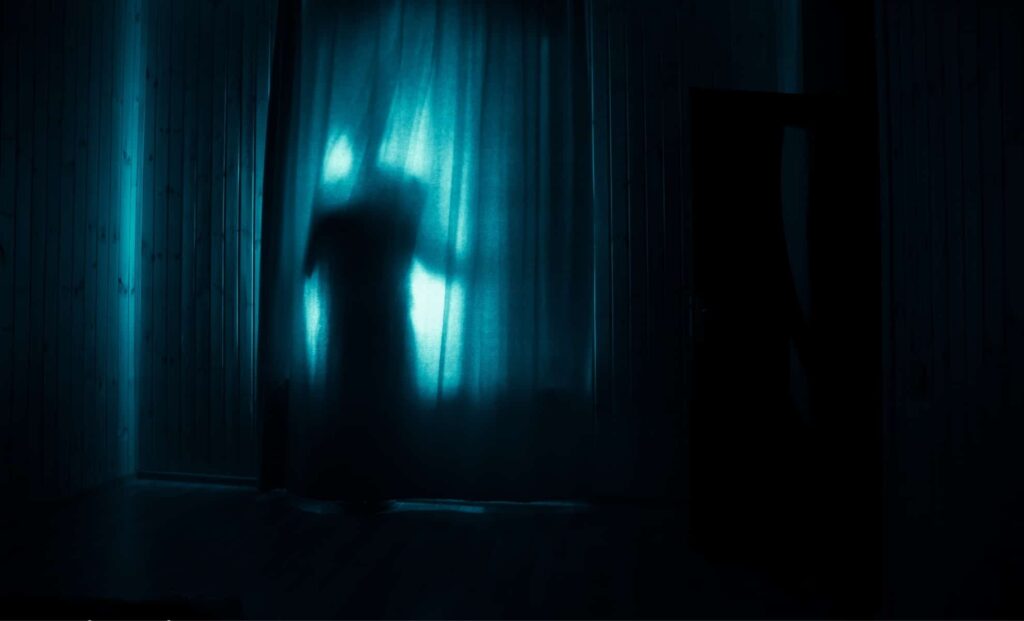While often dismissed as imagination or fear, sensed presence is gaining traction as a subject of neurological and psychological study. It appears in contexts ranging from dark basements to polar expeditions, and in some cases, during serious medical conditions. By examining how the brain reacts in certain environments, researchers are narrowing in on why some individuals are more likely to sense something—or someone—that isn’t there.
A recent experiment explored how sensory deprivation and mental traits influence this phenomenon. The findings offer a glimpse into how the brain handles ambiguity when its usual cues are stripped away. But beyond clinical relevance, the research touches on a more universal human experience—the irrational fear of being watched in the dark, and what it might reveal about our cognitive wiring.
Stripping the Senses to Expose the Presence
In a 2025 study published in Religion, Brain & Behavior, researchers from Masaryk University in the Czech Republic tested 126 participants by isolating them in dark, sound-blocked rooms for thirty minutes. Some were told, falsely, that another person might enter the room at any time. The aim was to simulate uncertainty and measure how subjects responded without external stimuli.
Participants were equipped with buttons to press if they sensed a presence. After the session, many described vivid perceptions: hearing footsteps through earplugs, feeling touches, even imagining someone shaking their chair. One individual claimed to see a shadowy figure passing through a doorway, despite the blindfold.
According to the lead author, Jana Nenadalová, the experiment was designed to identify why some people experience sensed presences more intensely than others. “Not everybody has the same vividness and intensity of sensed presences,” she explained, pointing to the role of psychological traits in shaping perception.

Fantasy-Prone Minds Aren’t Always More Susceptible
The study incorporated psychological assessments measuring imaginative suggestibility and fantasy proneness. These traits are often linked with creativity and the tendency to become immersed in daydreams or vivid internal experiences. Researchers expected those high in fantasy proneness to report more sensed presences.
Surprisingly, that wasn’t the case. Participants who scored higher in fantasy proneness were not more likely to feel a presence or report being touched. Nenadalová suggested that people with this trait might be more comfortable retreating into their imagination, rather than being hyperaware of ambiguous surroundings. “Perhaps such people just dive into their fantasies when they are alone in the dark,” she said, “which makes them feel safe and not attentive to the outside environment.”
The results challenge assumptions about susceptibility to eerie experiences, hinting instead at how different coping mechanisms play out in stressful or disorienting environments.
When the Brain Fills in the Blanks
The phenomenon may stem from the brain’s reliance on predictive processing—its constant effort to interpret the world by anticipating what’s next. In conditions of low sensory input, such as dark silence, the brain may struggle to generate accurate predictions. As a result, it fills in the gaps with guesses, which can lead to the perception of a presence.
According to Discover Magazine, this effect is not necessarily pathological. While it can appear in individuals with conditions like Parkinson’s disease or sleep disorders, sensed presence also occurs in healthy people in ordinary settings. It is a byproduct of how the brain deals with limited information and potential threats.
This mechanism explains why a dimly lit basement or a forest at night can evoke such intense discomfort. The brain, starved of reliable cues, starts constructing possibilities—some of which feel real. That discomfort is not irrational, but rather the brain doing its best to keep us alert and safe.

